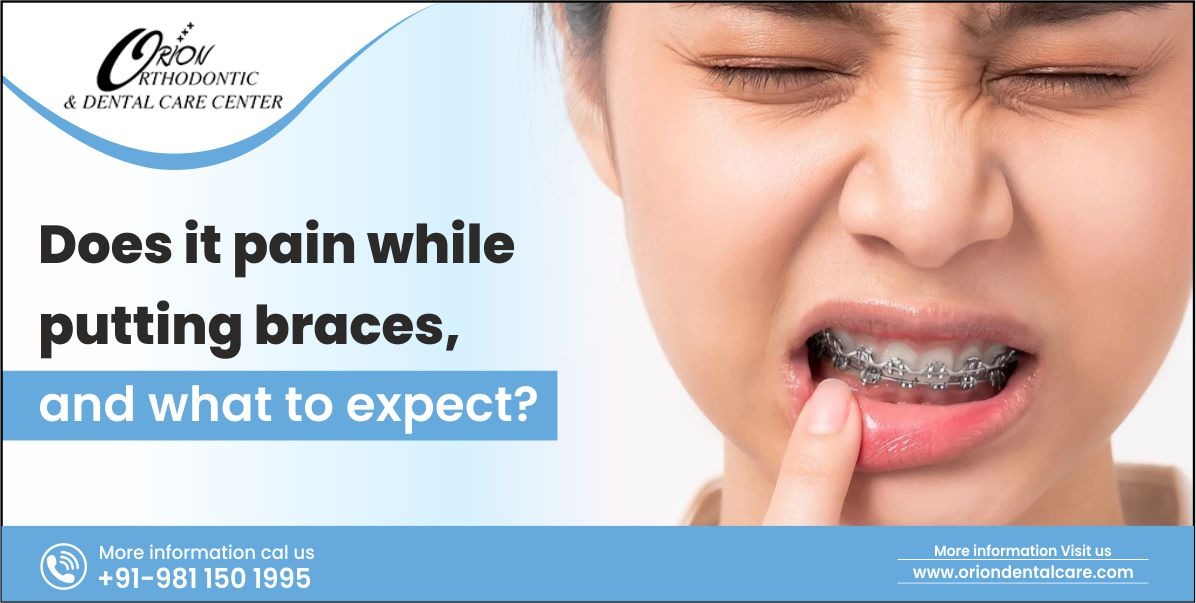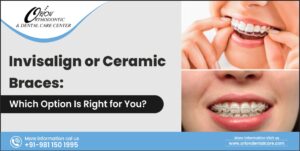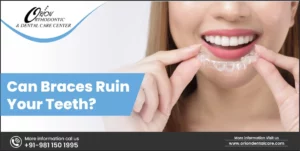Are you thinking about getting braces to fix your teeth and get that perfect smile? With the advances in orthodontics over the years, there are many different types of braces to choose from depending on your needs and priorities.
Choosing the right type of braces for you depends on several factors such as dental disease, lifestyle, and your personal preference. In this blog, we’ll go over the different types of braces and help you decide which one is right for you.
Traditional Metal Braces
Traditional metal braces are the most common type of braces. They consist of metal brackets attached to each tooth and are connected by a wire. These braces have been in use for many years and are highly effective in correcting a wide range of orthodontic issues.
Pros:
- Effective for complex dental issues.
- Cost-effective.
- Suitable for all age groups.
Cons:
- More noticeable than other options.
- May cause mild discomfort and require adjustments.
Ceramic Braces
Ceramic braces, also known as clear braces, work similarly to traditional metal braces, but they use tooth-colored or clear brackets and wires. This makes them less evident and a popular choice among adults and teenagers who want a more discreet option.
Pros:
- Less noticeable than metal braces.
- Effective for a wide range of dental issues.
- Suitable for all age groups.
Cons:
- Slightly more expensive than metal braces.
- May stain or discolor if not properly maintained.
- Lingual Braces
Lingual braces are similar to traditional metal braces but are placed on the inside surface of the teeth, making them virtually invisible from the outside. These braces are customized to fit an individual’s teeth and are highly effective for complex orthodontic issues.
Pros:
- Virtually invisible from the outside.
- Effective for complex dental problems.
- Customized to fit your teeth.
Cons:
- More costly than traditional braces.
- Might cause initial discomfort and take time to get used to.
Invisalign
Invisalign is a popular choice for those seeking a more flexible and nearly invisible way to straighten their teeth. Invisalign uses a series of clear, removable aligners that are specially customized for an individual’s teeth. These aligners need to be changed every few weeks to gradually shift teeth into the desired position.
Pros:
- not visible.
- Removable for eating and cleaning.
- Comfortable to wear.
Cons:
- Not suitable for severe dental misalignments.
- These braces are more expensive than traditional braces.
Self-Ligating Braces
If you’re looking for a metal or ceramic brace, self-ligating braces are the way to go. They don’t need any kind of elastic or metal ties to keep the wire in place but instead use a special clip mechanism. This can help reduce friction, so you can get the job done faster and with fewer adjustments.
Pros:
- comparatively faster treatment.
- Less friction and discomfort.
- Available in metal and ceramic options.
Cons:
- May be slightly more expensive than traditional braces.
- May not be suitable for all orthodontic issues.
Orthodontist’s Recommendation Orion Dental Clinic
At the end of the day, it’s all about finding the right braces for you. It’s up to you and your dentist to decide what works best for you. You’ll need to go through a thorough check-up and talk to a doctor who can give you the best plan of treatment for your particular case.
They’ll take into account factors like how bad your teeth are, how old you are, and how you live your life. So if you’re thinking about getting braces, make sure to get in touch with an experienced dentist from Orion Dental. They’ll be able to help you find the perfect braces for you.








